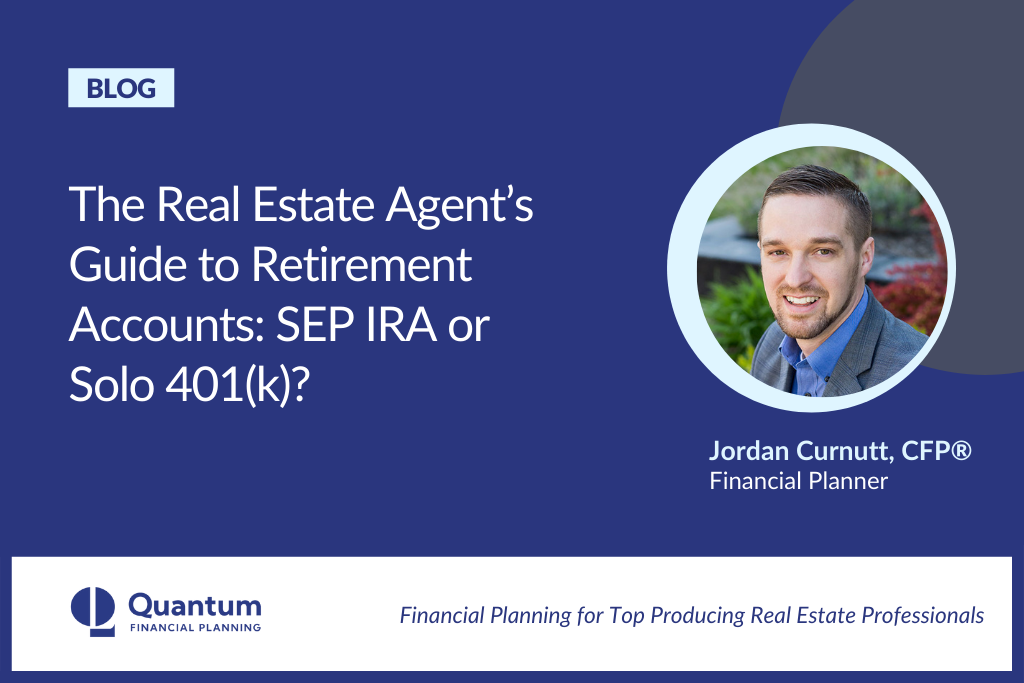As a top-producing real estate agent, you know that achieving financial success is crucial for securing a comfortable retirement. However, unlike your peers in the corporate world, you don't have the luxury of a built-in company 401(k) plan. Therefore, you must save even more to reach your retirement goals. This guide will outline two efficient small business retirement plans that you can use to prepare for retirement: the SEP IRA and the Solo 401(k).
The SEP IRA
The Simplified Employee Pension (SEP) IRA is the easiest retirement-savings vehicle to implement for your business. Here are some key features of a SEP IRA:
SEP IRA Account setup
Setting up a SEP IRA is straightforward and can be established with any reputable investment custodian such as TD Ameritrade, Charles Schwab, or Vanguard. Additionally, there is typically no cost to establish a SEP IRA.
SEP IRA Contribution limits 2025
What are the SEP IRA contribution limits in 2025? The maximum contribution to a SEP IRA is $70,000 for 2025. However, your income level and business structure will determine your contribution limit. Sole proprietors and LLCs are limited to 20% of their Schedule C net income, while S corporations have a limit of 25% of their W-2 income (dividend income is not included).
Contribution deadlines
SEP IRAs offer flexibility in timing contributions. Post-year funding is available up until the tax return filing deadline. If you had a great year in business and want a significant tax deduction, consider making a SEP contribution.
Types of contributions
The drawback of SEP IRAs is that they only permit traditional contributions. This means you will receive a tax deduction for each dollar you contribute to the retirement plan, but Roth contributions are not available.
The Solo 401(k) Plan
As the name suggests, the Solo 401(k) is a retirement plan designed for self-employed individuals or sole owner-employees of corporations. Here are some key features of a Solo 401(k):
Solo 401(k) Account Setup
Solo 401(k) plans are slightly more complex than SEP IRAs but still easy to set up by 401(k) standards. However, you will need to draft and implement a Plan and Trust document, which will incur some cost. Additional forms are typically not necessary until plan assets breach $250,000. We recommend partnering with a plan consultant to ensure compliance.
Solo 401(k) Contribution Limits 2025
What is the maximum solo 401(k) contribution limits in 2025? The maximum contribution to a Solo 401(k) is also $70,000 for 2025. Since Solo 401(k) plans allow for both employee and employer contributions, there is more flexibility in income levels than with the SEP IRA.
Contribution deadlines
Solo 401(k) plans must be established in the year for which you are making contributions. Employee contributions must also be made in the tax year, making the rules more stringent than the SEP IRA's.
Types of 401(k) Contributions
The significant advantage of the Solo 401(k) is the ability to select Roth tax treatment on a portion of your contributions. This means you can forgo the tax deduction now and let those dollars grow tax-free for retirement.
Deciding on a Retirement Plan
While there is no one-size-fits-all retirement account, it is crucial to take action today and save for your retirement. Consult with your financial planner and CPA to ensure you understand all the pros and cons before making a decision.
Ultimately, the most important thing is not the retirement plan you choose but that you take the initiative to prepare for retirement. As a small business owner, no one else will do it for you. Schedule a complimentary insight meeting with us today to discuss your situation and how we may be able to help you achieve your retirement goals.



